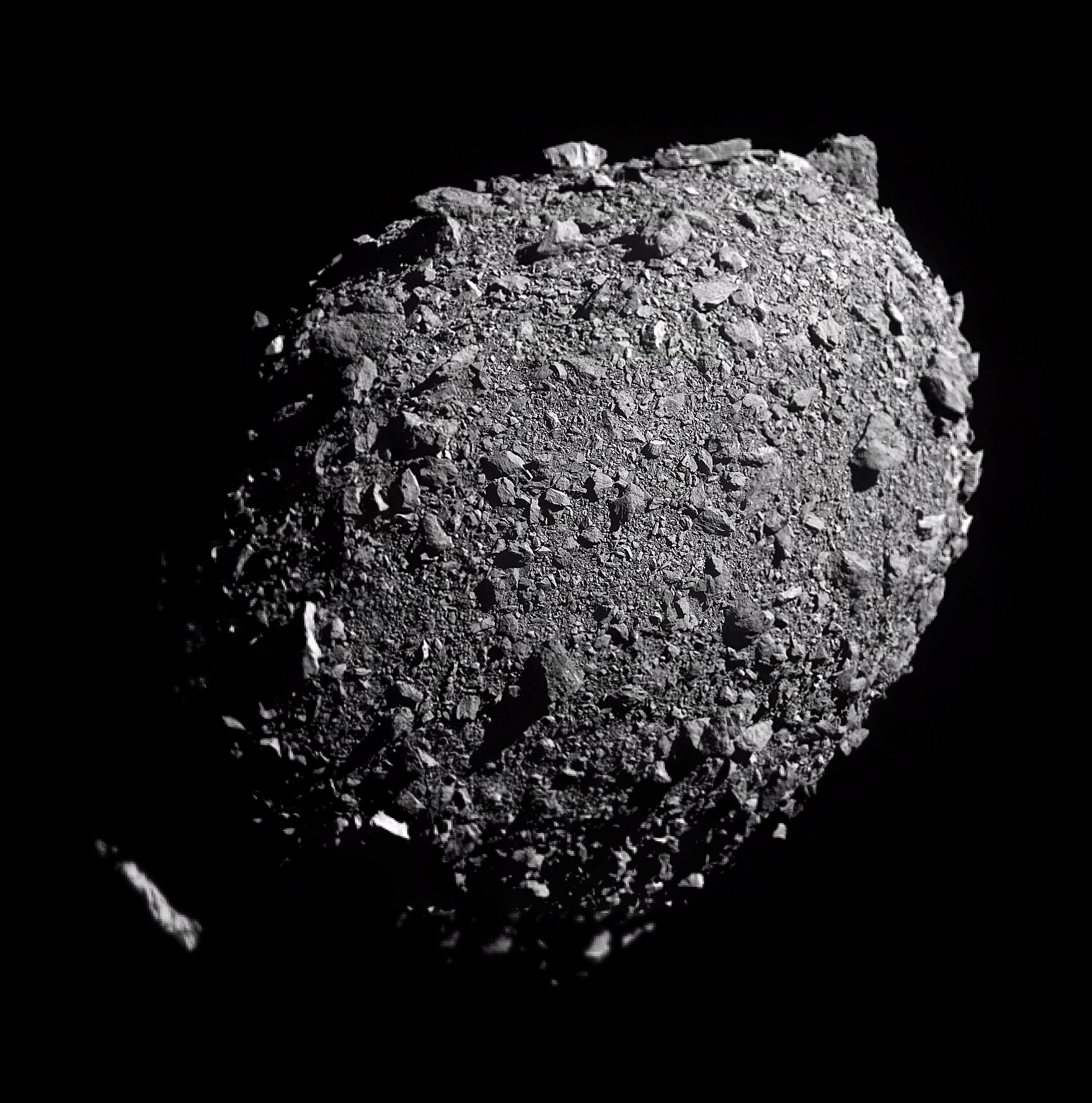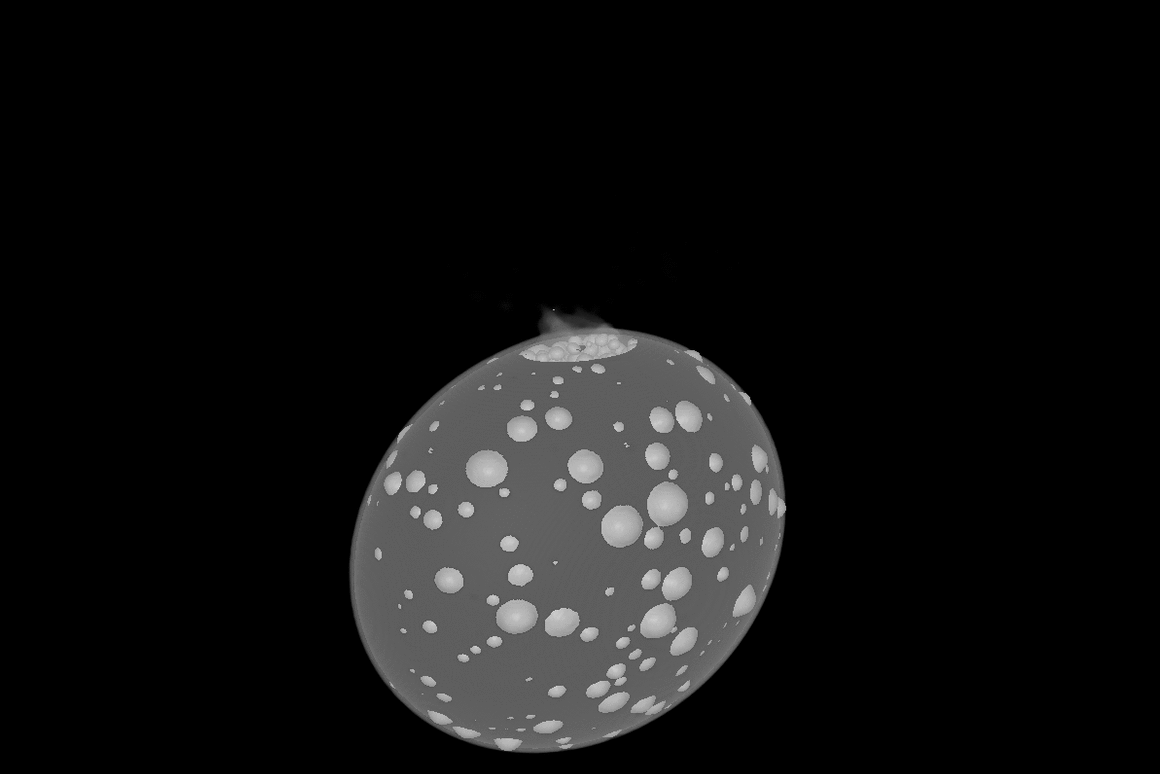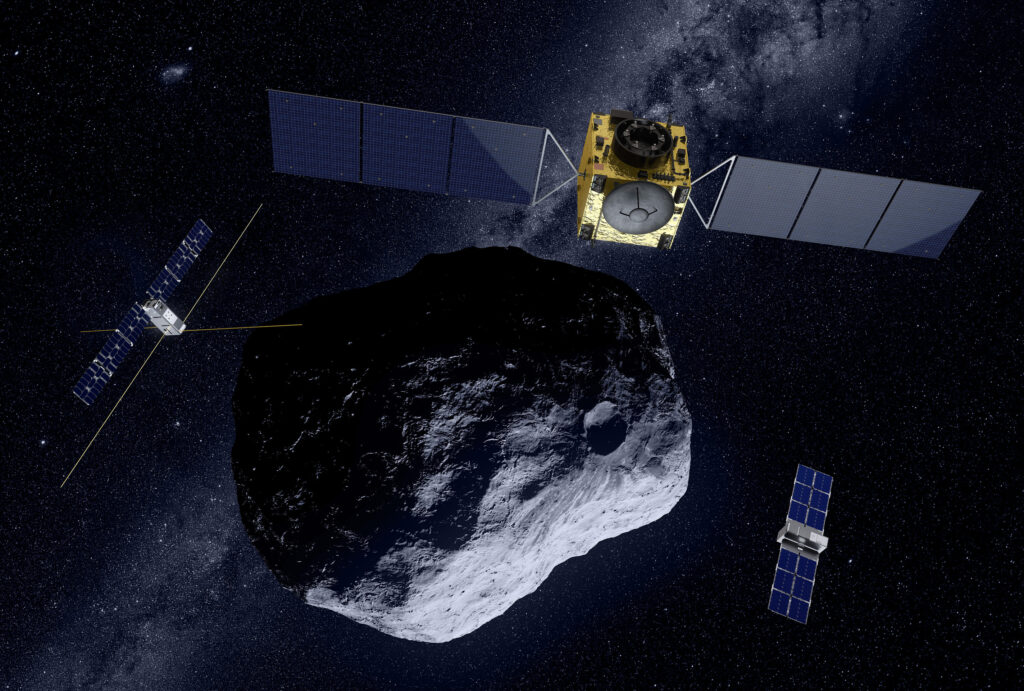This year, ESA plans to launch the Hera spacecraft, the main purpose of which is the Dimorphos asteroid. In 2022, it became the object of NASA’s planetary defense experiment, during which the DART probe crashed into it. However, the results of the new study suggest that Hera may not find any crater from this collision at all.
Bombing of the Dimorphos
DART’s collision with Dimorphos took place on September 26, 2022. Its consequences far exceeded the expectations of specialists. According to the most conservative estimates, the strike knocked out at least a thousand tons of matter from the surface of the asteroid. It also had a long dust tail (which later forked) with a length of 10 thousand km.

In addition, the impact seriously changed the orbital parameters of the Dimorphos, which is a satellite of the larger asteroid Didymos. Before impact, the orbital period of the Dimorphos was 11 hours and 55 minutes. After the impact, it was reduced to 11 hours and 22 minutes.
At the end of 2026, the Hera spacecraft will arrive at Dimorphos. One of his primary tasks is to study the crater formed as a result of the impact. However, the results of a new study carried out by scientists from the University of Bern suggest that Hera may not find any funnel at all. Instead, the DART impact most likely completely changed the shape of the asteroid.
Completely different asteroid
The researchers came to this conclusion during a series of 250 simulations reproducing the first two hours after the collision. It took about a week and a half to prepare each of them. Scientists have tried to take into account all known sizes, starting from the characteristics of the asteroid and ending with the mass of DART.

Simulations have shown that the most likely scenario is one in which there is no crater left on the surface of the Dimorphos after the impact. On Earth, craters form in a short time, and a typical cratering cone angle is about 90 degrees. But it’s different on Dimorphos. The fact is that this object is a “garbage heap” — an accumulation of debris held together by very weak gravitational forces. Simulations showed a much wider angle of the ejection cone, reaching up to 160 degrees, which was influenced by the curved shape of the asteroid’s surface, as well as the fact that the value of the second cosmic velocity on it is only 10 cm per second.
According to scientists, the most likely scenario is that the crater continued to expand and at some point simply covered the entire asteroid. As a result, the Dimorphos actually changed its shape. The researchers figuratively compare it to M&M, from which they took a bite. According to their estimates, the DART impact ejected about 1% of the entire mass of Dimorphos into space and led to the displacement of about 8% of its substance.

If Hera confirms these findings, they will also be important for the history of the ’s origin. The researchers suspect that it was formed as a result of the past “rotation” of Didymus, which ejected material from the equator into space, which then coalesced under the influence of gravity.
According to https://www.esa.int
Follow us on Twitter to get the most interesting space news in time
https://twitter.comne/ust_magazine


